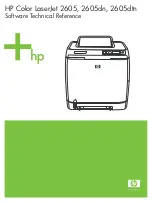
Threats to Computer Security
15
traffic that the user cannot control. This can lead to a security breach and
to direct financial losses.
Spyware
This software collects information about a particular user or organization
without their knowledge. Spyware often escapes detection entirely. In
general, the goal of spyware is to:
•
trace user actions on a computer;
•
gather information on the contents of your hard drive; in such
cases, this usually involves scanning several directories and the
system registry to compile a list of software installed on the
computer;
•
gather information on the quality of the connection, bandwidth,
modem speed, etc.
Riskware
Potentially dangerous applications include software that has no malicious
features but could form part of the development environment for malicious
programs or could be used by hackers as auxiliary components for
malicious programs. This program category includes programs with
backdoors and vulnerabilities, as well as some remote administration
utilities, keyboard layout togglers, IRC clients, FTP servers, and all-
purpose utilities for stopping processes or hiding their operation.
Another type of malicious program that is similar to adware, spyware, and
riskware are programs that plug into your web browser and redirect traffic. The
web browser will open different web sites than those intended.
Jokes
Joke software does not do any direct damage, but displays messages
stating that damage has already been done or will be under certain
conditions. These programs often warn the user of non-existent dangers,
such as messages that warn of formatting the hard drive (although no
formatting actually takes place) or detecting viruses in uninfected files.
Rootkits
These are utilities which are used to conceal malicious activity. They
mask malicious programs to keep anti-virus programs from detecting
them. Rootkits modify basic functions of the computer’s operating system
to hide both their own existence and actions that the hacker undertakes
on the infected computer.
















































